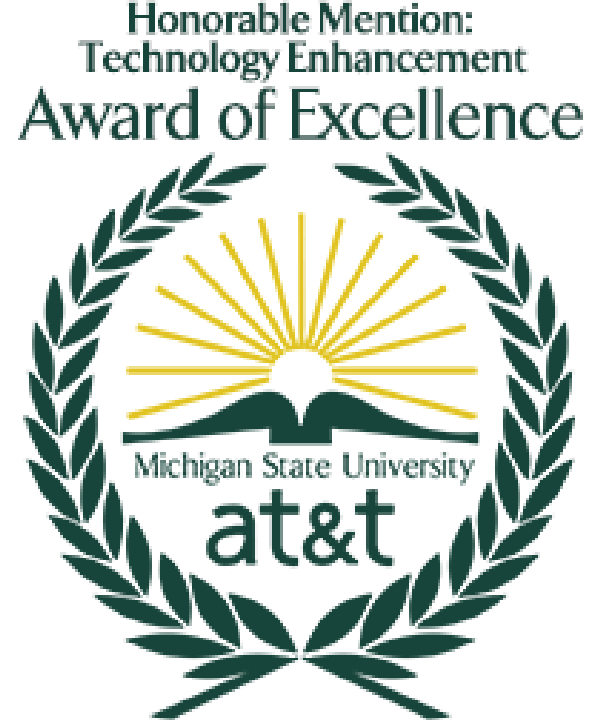How do online technologies shape how we learn, work, play, socialize, and use information?
Drawing on an interdisciplinary, emerging base of research and students’ experiences, CEP 956: Mind, Media & Learning takes a critical and informed approach to evaluating contemporary online and social media practices for teaching and learning. The course explores the psychology and sociology of new media; media effects and learning with media; issues of identity, literacy, and culture in technologically mediated environments and the reciprocal relationship between educational psychology and educational technology. Most importantly, the course is designed to help students debate current issues and develop their research interests to situate their work in the field.
Student performance is assessed through formative and summative feedback:
-
Synchronous Whole Class Discussions: These discussions took place in the same time and space with the online students using robot technologies to engage in discussion with those physically present on campus.
-
Online Group Discussions: These discussions, focused around guided reading questions, took place asynchronously in the course website’s discussion forum one week before our synchronous whole group class discussion.
-
Written Reflections: Students were given opportunities throughout the course to reflect on how the use of the robots enhanced their learning, if at all.
-
Publishable Journal Article: Students completed a final paper in which they prepared an empirical manuscript or practice-focused article for publication.
-
Class survey and focus groups: Students completed pre- and post-semester surveys and interviews about their experience with the robot technologies.
Aspects of the course that are technology-enhanced: students used robots to mediate discussion; a course website served as a hub to other technologies used (e.g., online discussion forum, D2L gradebook, Twitter); students engaged each other and their instructor via Twitter as a backchannel for the course.
Greenhow sought out robot technologybecause she had used it to reduce transactional distance in a previous course (i.e., CEP 901 Proseminar), especially among those individuals physically present and those who are online. In partnership with a colleague in the College of Education’s Design Studio (William Cain) and the Accessibility Specialist in the Resource Center for Persons with Disabilities (Ginger Martz) along with two ASL interpreters, she sought to investigate students’ experiences of social presence and embodiment in robot- mediated compared to videoconferencing communication in order to understand better how to improve the overall quality of the synchronous class discussion.
Robot technology is being tested as a solution when students are not able to be physically present due to health issues; schools and hospitals are working together so that hospitalized children may be “present” in school classrooms in robotic form (Kristofferson, et al., 2013). In our case, we sought to understand if this technology offered some affordances for hybrid students with auditory disabilities and their interpreters. According to evaluations of the Beam robots from the ASL interpreters taken at the end of the course, the robot technology gives students with auditory disabilities the same options and access as students without these disabilities. Students have the option to choose face-to-face or take advantage of the technology and access the class remotely. Most important, the technology gives interpreters the ability to do their job more effectively because the interpreters have access to seeing and hearing all the other students to accurately interpret for the Deaf student.
Technologies and frameworks used in the course:
- Beam robots (https://suitabletech.com)
- Zoom (https://zoom.us)
- Desire2Learn (https://d2l.msu.edu)
Team members:
William Cain, College of Education
Virginia (Ginger) Martz and two sign language interpreters, Resource Center for Persons with Disabilities (RCPD)

